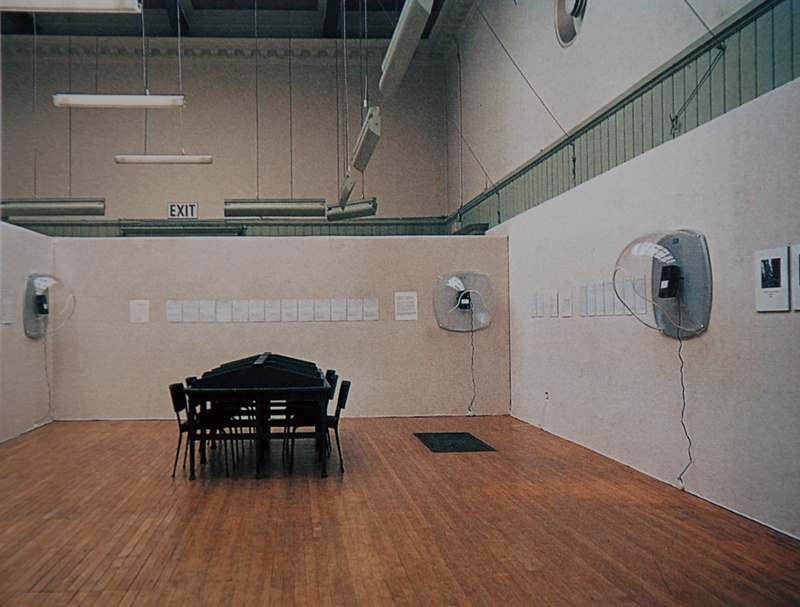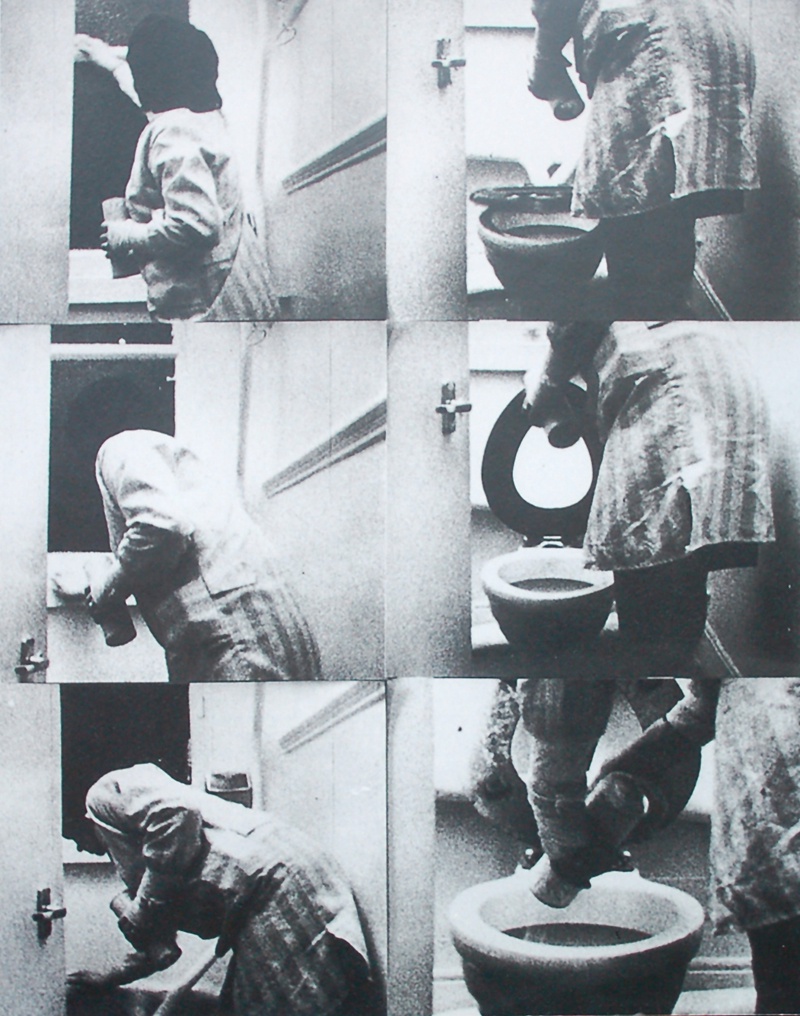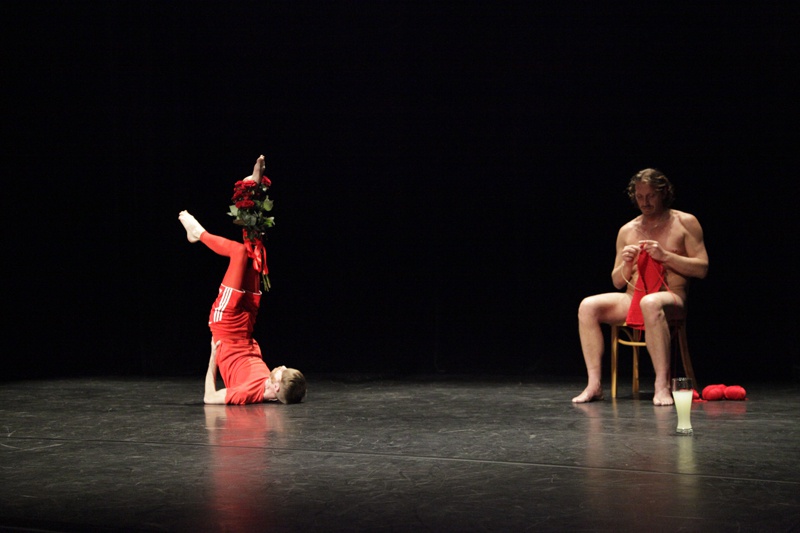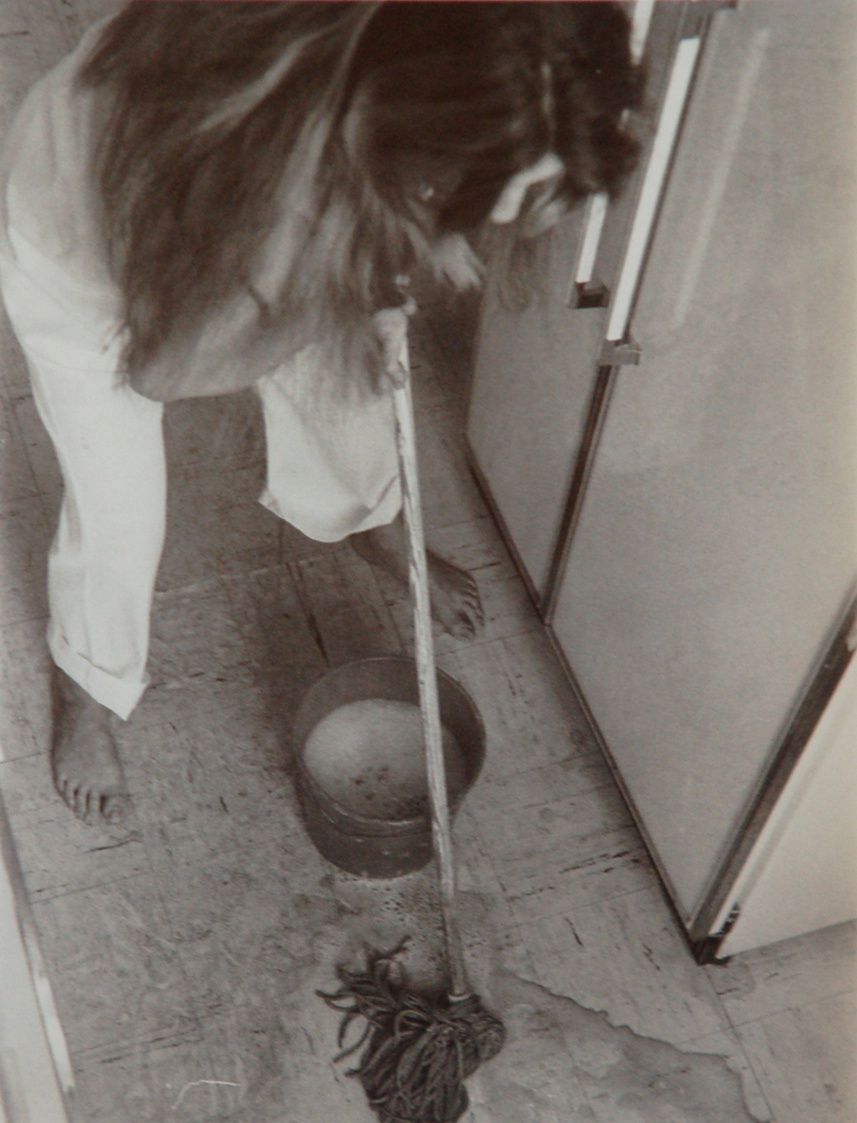The Value of Autonomy – a conversation between Marina Vishmidt and Kerstin Stakemeier about the reproduction of art

Marina Vishmidt: The first question might be: Why discuss autonomy now? Autonomy would seem to have been long since discredited as a critical framework for art. Radical dependency, in all its fluid and contextual forms, comes to constitute a current orthodoxy. One site where this was registered, to a great extent, was the recent documenta. This was manifested thematically, with the emphasis on a sort of chthonic horizontality of times, spaces and discourses, and practically, it was dependent on its stable of “100 interns for 100 days” to realize the participatory projects by artists. So what can be productive about discussing autonomy now is that it can function as a neuralgic point – and one with a very contested history – within the system of material and conceptual disavowals that hold together the all-pervasive cosmology of art as we are given to understand it today. Art’s autonomy, in the Adornian and still corrosive sense for me, is the scar of what it can’t get rid of, namely its roots in the division of labor and class society; the magnetic repulsion between art and labor, art and money, art and all the parameters of capitalist reality, which provide it with life and toys.
Kerstin Stakemeier: Formulating autonomy as a neuralgic point of art today means, unlike in modern or early postwar times, when art was not yet an economic power structure itself, that we are engaging in a discourse on productivity and the formation of social power. Those roots of autonomy that you mention and that Adorno still characterized as the undercurrents of artistic work beyond labor have converged with industrial labor culture in the postwar era and, with the disintegration of Fordism, inspired a redistribution of autonomy not as a social relation of enacted difference but as a task to be fulfilled within labor inside and outside of art.
The autonomy of art Adorno describes was in fact already art’s “formal subsumption” (Karl Marx) under capital. It was being juridically demarcated as a sphere of production, but the artistic terms of creation did not change fundamentally until the middle of the 20th century. In the beginning of the 1970s, Peter Gorsen argued that the social strata that had employed art as a representational means were no longer depending on it for emancipatory experience or symbolization of their own education. [1] Contemporary (in contrast to modern) art was never needed to perform or justify power. I think today we can expand this assumption: Art no longer needs to fulfill this function, because it no longer designates a reproductive and representational realm, but one of productivity and social power. It signifies power by its status within contemporary capitalist culture, not by advantageous reflection and social exemption. Autonomy herein is its exportable unique selling point and what Gorsen registered was the “real subsumption” of art under capital. It is being turned into a modernized and modernizing branch of productive contemporary cultural production.
The fetish of nonproductive labor in art, which Peter Bürger and others have fostered in postwar aesthetic theory, simply meant that, effectively, the social and the economic status of autonomy were played out against one another. Autonomy is criticized for its absence, but not for its nuisance.
 Berwick Street Collective, "Nightcleaners", 1975, Filmstill
Berwick Street Collective, "Nightcleaners", 1975, Filmstill
Vishmidt: I agree. Artistic autonomy has historically evolved with and through the autonomy of capital. The development of capital to the present day has been accompanied by its tendency to become more autonomous from labor and, indeed, production. The concept of “financialization” is often framed as the independence of capital from the kinds of value production rooted in the direct exploitation of labor and the manufacturing of industrial commodities to make profits (or, rather, its displacement). This thesis of autonomization can be misleading – austerity proves that capital’s profits are very much tied up with lowering the value of labor-power, and with the creation of large surplus populations useless to capital. However, capital’s restructuring and the political sovereignty of finance are developments that not only have been reflected in the processes and narratives of art, but have directly interacted with art. As Andrea Fraser has noted recently in her text “L’1%, C’est moi”, that the institution of art, in strict corollary with finance, grows at the expense of the rest of society. [2] However, I think this is not the real problem. The real problem is the society of capital where capitalism is okay until it’s not because its effects become disturbing.
So here we have homologies between the subjectivity of capital becoming autonomous and an idealized notion of artistic autonomy. What we could perhaps think about on that basis is how autonomy is a class concept for art – with relation to the “class” or type of thing it is, and the class relations in which it partakes, or in which it partakes through its detachment from social reality as art. Its affinity with the autonomy of money means that autonomy can be an asset – not just in art markets, but in labor markets, property markets, anywhere art can be the commodity that sells all others. Art constitutes an asset class because it is autonomous. The principal interest of autonomy for art, as Adorno wrote, is that it is a commodity that gives itself its own law – fixed in its exceptional status by the logic of capitalist production – allowing it to represent non-identity in a society dominated by general equivalence.
 Ian White, "Trauerspiel 1", Hebbel Am Ufer, Berlin, 2012
Ian White, "Trauerspiel 1", Hebbel Am Ufer, Berlin, 2012
Stakemeier: That’s an interesting point. Where autonomy is no longer a social relation of non-simultaneity between art and capital but has turned into a homology between the ideology of capital as an “automatic subject” (Karl Marx), a perpetuum mobile, and the ideology of art as an asset of it, one with immense potential for speculation, an entrepreneurial state of production is naturalized. In it autonomy has to be affirmed, not as a social but an ontological status of (not only) each artist’s own product as commodity. It relates to the expanded commodity fetishism Isabelle Graw describes in her book “High Price” – the role of the artist herself as product.
This historical twist in the social meaning of autonomy which you mark, is exactly what makes the 1970s such a productive period to look at for an understanding of our own times, I find. The structural analogies between the work of feminist Marxists, like Silvia Federici, in the “Wages for Housework” movement (WfH) since 1972 and that of feminist producers in the arts, like Lucy Lippard or Helke Sander, initiated around the same time, address the landslide changes in the social meaning of autonomy in that period most poignantly. WfH were criticizing the distinction of productive from nonproductive labor in Karl Marx’s writing, which rendered unpaid reproductive labor invisible, privatized, and naturalized. Lippard, Sander, and others, at the same time, problematized the uneasy, or rather impossible, position female producers acquired in contemporary art, being forced to adhere to an ideal of autonomy that was based on its antithesis to their very own social role within capitalist societies as the predestined bearers of this naturalized and unpaid reproductive work. Neither demanded the recognition of their activities within the measures of productive labor, but rather, both insisted on a relative autonomy of the spheres they spoke for and from. Their praxis was claiming a recognition of difference, of the non-simultaneity of discrete spheres of work and of lived lives. And even if we know that, since the “globalization of care” (Arlie Hochschild) as service labor and the “globalization of art service” as a market of culturalized difference have re-identified such attempts within a culture of capital, this insistence on autonomy in reproduction as difference still seems to offer viable political starting points today. Autonomy in this becomes a token deployed to claim specific fields of production or reproduction as sites of struggle, be it housework or abstract painting – autonomy becomes socialized.
Vishmidt: In a way, I think, that also shows us that the questions of productivity or unproductivity can be a red herring when you are dealing with the social relations of capital, and you need another logic to fight it. This is something we can learn from feminist history, for example, from WfH – does it matter whether housewives are productive workers or not, if what’s at stake is getting capital to pay for the labor that reproduces it? Even in Marx you see that being a productive worker is not a good thing.
To get back to what you mentioned at the beginning about the transition between “formal” and “real subsumption”for art, I agree the shift has been definitive. I think “real subsumption” as the tendency for capital to extract value from all kinds of social activity, not just the workplace, has totally changed the game for art. I am inclined to give a general or “social factory” sense to “real subsumption” as describing how capital invests the social, but also to keep to a more restricted use, which addresses the labor process itself, and how capital restructures the organization of work. From this latter viewpoint, I would hesitate to say that art is really subsumed, if only because capital has not seized control of the production process of art. It is not industrially organized, as in controlled, managed, and waged by the hour or the contract – the artist’s time is her own. Its financial infrastructure comes from revenue (taxes from the state, spare income channelled through foundations or wealthy individuals) not productive investment that is reinvesting to expand production from profits already earned. It is a positional good, a luxury subjectivity, but one which remains artisanally produced.
Stakemeier: I do not think that “really subsumed” signifies an endgame for art or even for the relevance of the concept of autonomy in it. But as one can see in the increasing intermingling of art, haute couture, design, and other fields of cultural luxury production, I would argue that these are implied into one sphere of capitalism, which, just like others, continually economizes its reproductive means. There is a huge difference between the pseudo-naïve cult of artisanal production in these spheres and the facticity of whole industries of highly skilled and internationally trained service labor performed there. And the artist as capitalist, which Diedrich Diederichsen described in his essay “On (surplus) value in art”, is the only figure that seems to be excluded from this capitalist “normalization” of art. She, or in this case, rather, he performs as a thoroughly professionalized genius. But not even this is true, if one looks at the effects which the multiplication of globalized art fairs and biennials have had on the necessity to establish a serial, recognizable, and qualitatively normed production. The “œuvre” explodes. Worldwide, in studios filled with freelancers and in subcontracted companies specialized on art services, art today is produced within what Marx called socially necessary labor time.
But even if the reproduction of art’s reproductive forces might be up to date with capitalism today, I do absolutely not want to indicate that this implies a (moral) judgment over art. As you said in the very beginning in reference to Adorno, art carries on an idiosyncrasy, because its pretense to autonomy still remained true until today. Autonomy may have changed its social function, but art still defines a field in which this function can be complicated and played out. This is why I find the relation of reproductive labor and service labor so productive in talking about art: It ties discourses over art’s social relevance to its actual social function within the reproduction of society.
Vishmidt: I actually like the idea of “imaginary subsumption”. Or even “mimetic subsumption”. It’s an interesting way of thinking about how market ideologies have restructured areas of social production without the market relations actually being in place – health, education, culture in the United Kingdom are very visibly traversed by it. It’s almost more a sign of a crisis of subsumption than the grip of subsumption in places where there is simply no hope of surplus value ever being produced. That’s also why the labor politics of art are so hopelessly confused. With art emulating service work, their key is the mimesis – it only makes its point if it remains art and not service work. Structurally, the difference is and has to be incredibly durable, as durable as class society. Art can take on any predicates and still remain art, and that’s why to my mind it is always closer to capital than to labor. They both have to disavow labor to establish their ideological but no less existing autonomy.
 Mierle Laderman Ukeles, "Private Performances of Personal Maintenance as Art", 1969
Mierle Laderman Ukeles, "Private Performances of Personal Maintenance as Art", 1969
Stakemeier: I would argue that art work is service labor, but is still art, as well as care work is service labor, but is still care. Real subsumption signifies no final accumulation, but a function of that action, that object or that person for capital. So what you suggest as “imaginary subsumption” or “mimetic subsumption” might be a way of refiguring an economic process as an artistic one, affirming art’s economic status to be able to externalize its laws of motion.
What Marx suggested is a system of reproduction that presents itself as a perfected idealism, as referred to earlier with the “automatic subject”, but which grinds relentlessly. And talking about the financialization of capital you characterized earlier on, the seeming dematerialization of capital’s reproduction can be made productive in relation to art. Since the Conceptual era, art has shown a tendency to imagine that ephemerality will sort out its dependence on their actual conditions of reproduction. I think it is the possible precision of such homologies which I am interested in aesthetically as well as politically. Think of Ian White’s performances with film like “Trauerspiel 1” (2012) at HAU 1 in Berlin, for example. White performed what he called five “dances” on the theater stage, minimalized and very strictly choreographed and gestured slow movements, while simultaneously screening five different films from the archive of Berlin’s Arsenal – Institute for Film and Video Art. White demonstrated cultural identifications as part of the body’s every movement, desire, and social being, which in relation to the films chosen, works by Peter Weiss, Hellmuth Costard, and Robyn Brentano and Andrew Horn among them, were structurally mirrored but not identified. Workers (Weiss), dancers (Brentano and Horn), and politicians (Costard) demonstrated the body and its filmic reproduction as a site of labor, class, sex, and power but the ensemble remained resistant against a simple functionalist interpretation. Autonomy is a wager for acting out specified differences in state of capital.
Vishmidt: I am intrigued by what you say about art and reproduction, it’s a topic that has preoccupied me consistently over the years. Insofar as art and domestic work both occur on the terrain of a mystified and unquantifiable “investment of love”, feminist politics and feminist strategies in art both rested upon bringing to light a “hidden abode of reproduction”, perhaps to have it recognized and valued, but what for me is the more radical implication, to throw the whole thing into question: The divisions of labor between art and maintenance, the heroic artist and the household drudge, as with Mierle Laderman Ukeles and her “Maintenance Art Manifesto” (1969) or the 1973 piece where she cleaned the museum and certified her cleaning equipment as artworks. [3] It reminds me of what people like Griselda Pollock write about feminism in art and art history respectively. For Pollock, the importance of bringing reproduction into art is to rupture the reproduction of art – its oedipal histories, its male ontologies, its lines of succession, its straight anxieties – all these stamps of authenticity.
Of course, to think about reproduction in relation to art from the perspective of domestic work as more than a metaphor means not clouding the very real differences in prestige and credibility between these two types of work that are not recognized as labor. It can enable us to volatilize an ossified social field and its “safe spaces”, its forms of legitimacy and its aporias. Here is where I think the question of reproduction in art is still very much alive. This is not to even get into the classical Althusserian idea that art is just an institution of reproduction, structurally.
I suppose that my interest in questions of reproduction in art is how each of these practices or fields can be used to undermine and corrupt the other. Bringing to light the supplementary or disavowed relations of art to reproduction can be part of that, but whether it would be a primary focus rather than a means, I’m not sure. This is perhaps because the social relations that divide into production and reproduction, art and labor, are of course themselves problematic. A practice of critical autonomy in art today would therefore have to consist in running at those divisions, and strategically that might mean dragging out the side that’s been hidden.
Stakemeier: Exactly. This is why I find it so promising to found a contemporary debate on art’s anti-systemic political value on, for example, Silvia Federici’s insistence that autonomy has to be sought in reproduction. To discuss autonomy today within the terms of a productivism, be it that of the genius artist or the agitating collective is pure capitalist positivism, the debates around reproduction offer a lever to take down this positivism artistically as well as politically accounting for its preconditions.
from Texte zur Kunst no. 88
https://www.textezurkunst.de/88/
Notes
| [1] | Peter Gorsen, “Transformierte Alltäglichkeit oder Transzendenz der Kunst?”, in: Peter Brückner/Gisela Dischner/Peter Gorsen/Alfred Krovoza/Gabriele Ricke/Alfred Sohn Rethel et al. (eds.), Das Unvermögen der Realität. Beiträge zu einer anderen materialistischen Ästhetik, Berlin 1974, p. 141. |
| [2] | Andrea Fraser, “L’1%, C’est moi”, in: Texte zur Kunst, 83, 2011, pp. 114–127. |
| [3] | As Ukeles noted 2009 in a interview, “Serra was this steel worker without the work, without the workers. And Judd was this carpenter without workers. They didn’t have workers, they didn’t have people, they had objects – or they had results. And I felt that they were falling into the same trap as the rest of this damn culture, which couldn’t see the whole structures or cultures of workers that made the kind of work that invented these processes and refined them.” Cf. “Manifesto for Maintenance. A Conversation with Mierle Laderman Ukeles”, online at: www.artinamericamagazine.com/news-opinion/conversations/2009-03-20/draft-mierle-interview (retrieved on November 13, 2012). |
